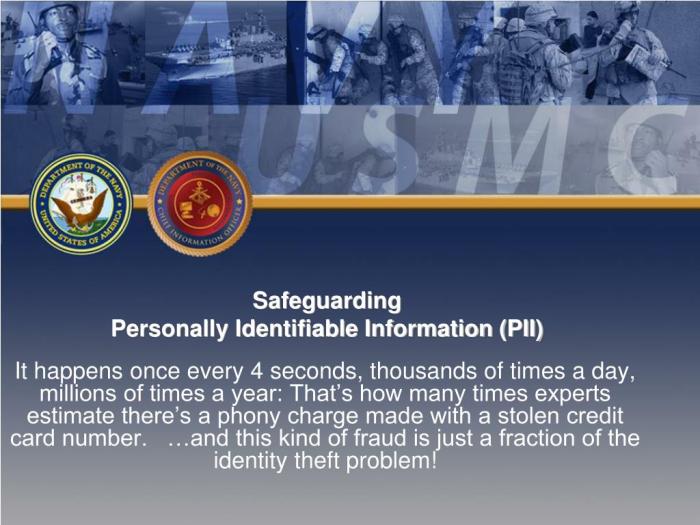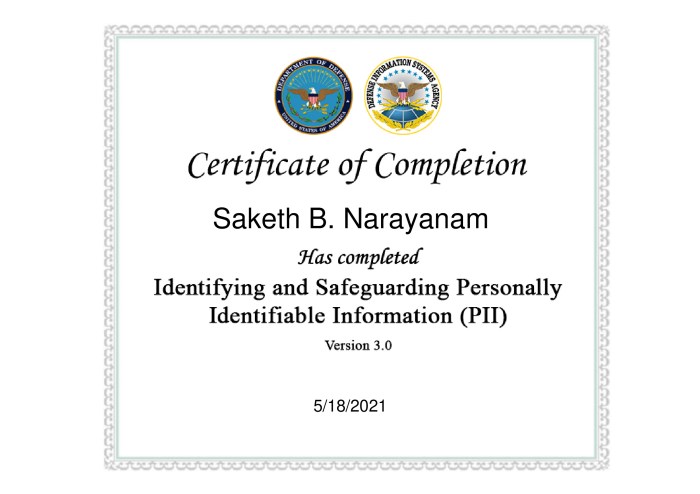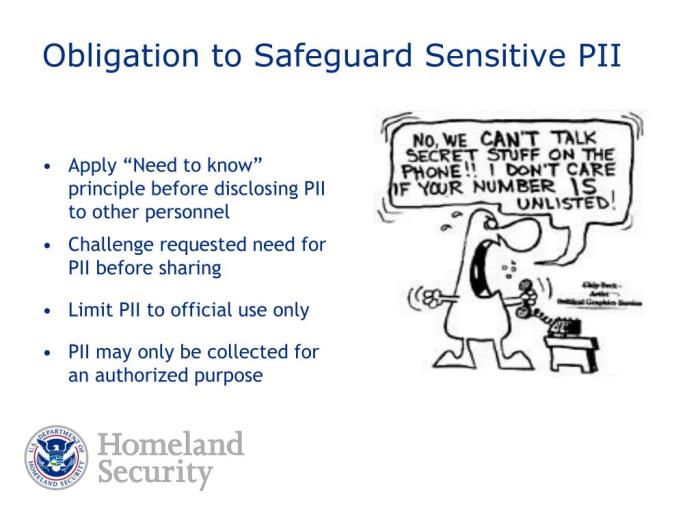Identifying and safeguarding pii test out answers – Identifying and safeguarding personally identifiable information (PII) is crucial in today’s digital age, where data breaches and privacy concerns are rampant. This guide provides a comprehensive overview of PII identification, safeguarding measures, testing techniques, and case studies to empower organizations with the knowledge and tools to protect sensitive data.
Identifying PII

Personal Identifiable Information (PII) refers to any data that can be used to identify a specific individual. Accurate identification of PII is crucial for organizations to comply with data protection regulations and safeguard individuals’ privacy.
Types of PII include:
- Name
- Address
- Phone number
- Email address
- Social Security number
- Driver’s license number
- Credit card number
- Medical records
- Financial information
- Biometric data
Challenges in identifying PII arise due to its diverse nature and the increasing amount of data collected. Organizations must adopt a comprehensive approach to ensure accurate identification and protection of PII.
Safeguarding PII

Protecting PII is essential to prevent unauthorized access, disclosure, or misuse. Best practices include:
- Encryption: Encrypting PII renders it unreadable without an authorized decryption key.
- Anonymization: Removing or modifying PII to make it impossible to identify individuals while preserving data utility.
- Access control: Restricting access to PII to authorized personnel only.
- Data minimization: Collecting and storing only the necessary PII.
- Regular audits: Monitoring and reviewing PII handling practices to identify and address vulnerabilities.
Mishandling PII can have legal and ethical implications, including fines, reputational damage, and loss of trust. Organizations must prioritize PII protection to safeguard individuals’ privacy and comply with regulatory requirements.
Testing PII Identification and Safeguarding

Regular testing is crucial to evaluate the effectiveness of PII identification and safeguarding measures. A testing plan should include:
- Test cases covering various types of PII and data formats.
- Expected outcomes clearly defining the desired behavior of the system.
- Automated testing tools to streamline the process and ensure consistency.
Continuous improvement is essential to address evolving threats and regulatory changes. Organizations should regularly review test results and implement enhancements to strengthen PII protection.
Case Studies and Examples

Successful PII identification and safeguarding implementations include:
- A healthcare organization implementing encryption and anonymization techniques to protect patient data.
- A financial institution using multi-factor authentication and access control measures to safeguard customer information.
PII breaches highlight the consequences of mishandling PII:
- The Equifax data breach in 2017 compromised the personal information of millions of individuals.
- The Cambridge Analytica scandal involved the unauthorized collection and use of Facebook users’ data.
Lessons learned from past incidents emphasize the importance of robust PII protection measures and regular testing to prevent and mitigate data breaches.
Popular Questions: Identifying And Safeguarding Pii Test Out Answers
What are the common challenges in identifying PII?
Identifying PII can be challenging due to the evolving nature of data, lack of clear definitions, and the presence of structured and unstructured data.
What are the best practices for safeguarding PII?
Best practices include encryption, anonymization, access controls, data minimization, and regular security audits.
Why is regular testing important for PII identification and safeguarding?
Regular testing ensures that PII identification and safeguarding measures are effective and up-to-date, mitigating the risk of data breaches and privacy violations.